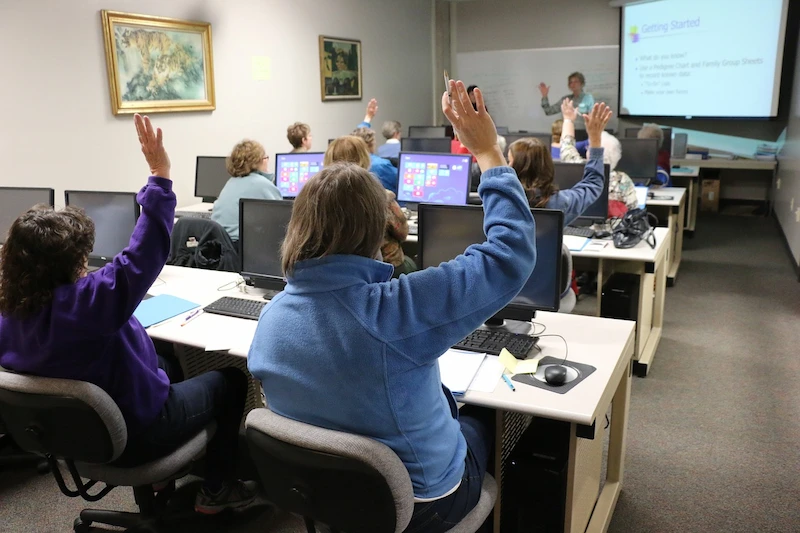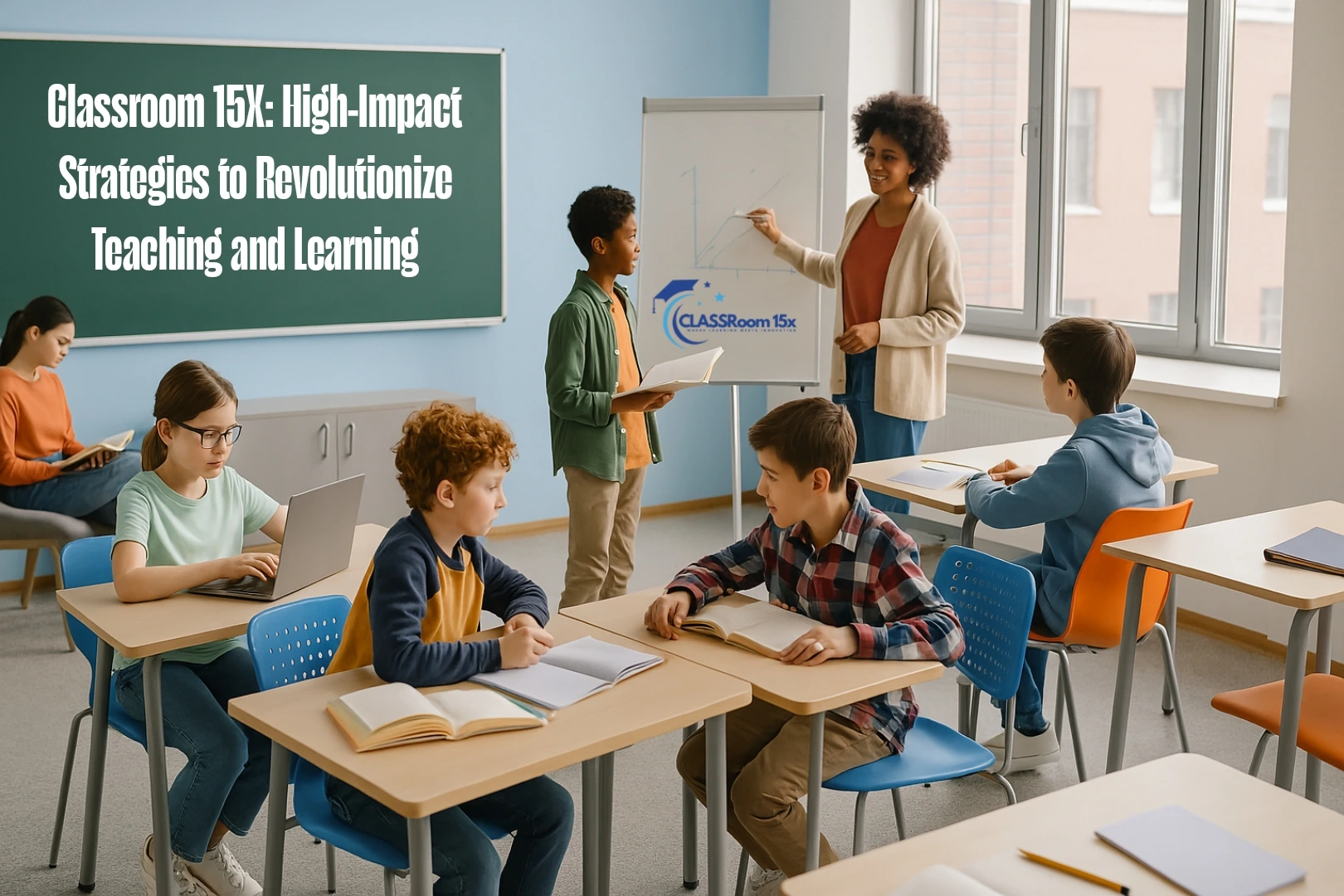Introduction to Classroom 15X
In today’s rapidly evolving educational landscape, Classroom 15X offers a fresh perspective on how teachers and students interact with course material. By combining state-of-the-art digital tools, interactive learning modules, and adaptive assessment strategies, this platform aims to foster an engaging and personalized environment. Educators can effortlessly track student progress in real time, while learners benefit from tailored feedback that addresses individual strengths and areas for improvement. The system’s robust analytics dashboard leverages cloud-based data to highlight emerging trends, enabling instructors to optimize lesson plans and target interventions more effectively. Mobile compatibility ensures that lessons remain accessible beyond the classroom walls, while enterprise-grade security protocols safeguard sensitive academic records. As institutions worldwide seek solutions that bridge the gap between traditional lecturing and immersive learning experiences, this system’s emphasis on flexibility and scalability has attracted significant attention. Its modular architecture accommodates a variety of subjects and teaching styles, making it equally well-suited for K-12 settings, higher education, and corporate training. Whether deployed in a small seminar or a large lecture hall, it promises to transform passive instruction into dynamic collaboration, setting a new standard for pedagogical excellence.
Key Features of Classroom 15X

At the heart of Classroom 15X lies a collection of intuitive tools designed to enhance every facet of the learning process. The interactive whiteboard module supports multi-touch gestures, real-time annotation, and seamless integration with third-party educational apps. A built-in AI tutor assists with common student inquiries, offering hints and supplemental resources when learners encounter challenges. The adaptive quiz generator crafts assessments based on individual performance patterns, ensuring that each test remains challenging yet achievable. Instructors can leverage the collaborative breakout rooms feature to facilitate small-group discussions, complete with screen-sharing and voice channels for enriched dialogue. Additionally, the platform offers an offline mode that allows students to download modules for disconnected learning scenarios, perfect for remote or low-bandwidth locations. Multilingual support enables seamless instruction in diverse linguistic environments, broadening accessibility. A comprehensive reporting suite compiles attendance, assignment scores, and participation metrics into customizable dashboards, enabling data-driven decision-making. Plugin APIs further facilitate integration with legacy systems such as student information systems and content management platforms, uniting these capabilities under a single, streamlined interface.
Benefits of Implementing Classroom 15X

Implementing Classroom 15X offers numerous advantages for both educators and learners. Teachers gain valuable insight into student engagement by accessing heat maps that highlight participation hotspots during lectures. This visibility allows for timely interventions, preventing knowledge gaps before they widen. Learners benefit from personalized learning pathways that adapt to their pace and proficiency, cultivating a sense of ownership over their educational journey. The platform’s cloud-based infrastructure reduces hardware constraints, enabling institutions to scale offerings without significant capital investment. Centralized content management simplifies collaboration among faculty, ensuring consistency across courses and minimizing redundancy. Community-driven interactions foster peer support networks, reducing drop-out rates and increasing motivation. Moreover, the reduction in printed materials aligns with sustainability goals, as digital distribution curtails paper waste and associated costs. From a financial perspective, the cost savings associated with automated grading and digital resource distribution can free up budgets for professional development and experimental pedagogy. Ultimately, this holistic approach fosters a culture of continuous improvement, where actionable data informs future curriculum design and pedagogical strategies.
Integrating Classroom 15X Technology
Successfully integrating Classroom 15X technology requires careful planning and stakeholder collaboration. Begin by conducting a comprehensive needs analysis to identify existing pain points and desired learning outcomes. Engage representatives from administration, IT support, and teaching staff to ensure alignment on objectives and to address potential implementation hurdles. Schedule pilot programs in select departments to collect feedback and iteratively refine deployment protocols. Provide targeted professional development sessions that demonstrate key features, best practices, and troubleshooting techniques, empowering instructors to harness the platform’s full potential. Incorporate change management principles by mapping out communication plans and setting up iterative feedback sessions to address user concerns promptly. Establish data governance policies and define clear roles for monitoring usage metrics and privacy compliance. Provide 24/7 technical support channels through chatbots and dedicated help desks to resolve issues without disrupting instructional activities. To encourage adoption, consider incentivizing early adopters with recognition programs or opportunities to lead internal workshops. By cultivating a supportive environment that values innovation, institutions can minimize resistance and accelerate the transition to a more dynamic instructional model.
Real-World Applications of Classroom 15X

Various educational institutions have leveraged this platform to address diverse instructional challenges. In higher education, universities have implemented flipped classroom models, where students review lecture materials asynchronously through interactive modules before engaging in advanced problem-solving sessions during class time. K-12 schools have utilized digital breakout rooms to promote peer-to-peer collaboration on projects, enhancing social learning and critical thinking skills. Corporate training departments have adopted gamified learning paths, integrating scenario-based simulations to prepare employees for real-world scenarios without the risks associated with on-the-job training. In the K-12 context, remote learning cohorts have leveraged these tools to maintain continuity during school closures, while special education programs have customized content with assistive technologies to support learners with diverse needs. Specialty programs, such as language immersion courses and STEM workshops, benefit from customizable content libraries that cater to specific subject matter. Virtual lab simulations have also emerged as invaluable resources in science curricula, offering hands-on experimentation without requiring physical lab infrastructure. These deployments demonstrate the platform’s adaptability across contexts, showcasing its capacity to support personalized instruction, foster collaboration, and streamline administrative workflows, ultimately driving measurable improvements in learner outcomes.
Best Practices for Classroom 15X Adoption
To maximize success, institutions should follow key best practices throughout the adoption process. First, prioritize executive sponsorship by securing commitment from leadership to champion technological change. Next, establish clear performance indicators—such as user engagement rates, assessment score improvements, and content completion timelines—to measure impact over time. Develop a phased rollout plan that begins with pilot groups and gradually expands to full-scale implementation, incorporating lessons learned at each stage. Facilitate continuous training opportunities and peer-led communities of practice, where educators can exchange tips, troubleshoot issues, and showcase innovative use cases. Maintain an open feedback loop by conducting regular surveys and focus groups, using insights to refine instructional strategies and platform configurations. Conduct periodic satisfaction surveys to gauge user sentiment and identify areas for enhancement. Create a centralized resource hub that hosts tutorials, FAQs, and user-contributed lesson plans to streamline knowledge sharing. Regularly review performance metrics to align ongoing training and support resources with evolving user requirements. Finally, allocate resources for ongoing technical support and maintenance to ensure system reliability and rapid resolution of any challenges that arise.
Future Outlook for Classroom 15X
Looking ahead, the evolution of digital learning environments will likely emphasize greater immersion through virtual and augmented reality integration. Advances in machine learning algorithms promise to deliver even more precise adaptive feedback, tailoring learning experiences to real-time cognitive and emotional signals. Cross-institutional collaboration networks could emerge, enabling educators to share resources and pedagogical frameworks globally, breaking down geographical barriers. Increased focus on data privacy and ethical AI will shape regulatory standards, requiring platforms to adopt robust compliance measures from the outset. As hybrid and remote models continue to gain traction, seamless interoperability with external tools—such as video conferencing services and open educational resource repositories—will become essential. The rise of edge computing will enable low-latency content delivery on handheld devices, making offline-first experiences more robust. Emerging biometric feedback tools may soon allow the system to adjust lesson intensity based on learner stress and engagement signals, opening new frontiers in personalized instruction. Ultimately, the next generation of educational technology will strive to balance innovative features with user-centric design, ensuring that digital classrooms remain both effective and inclusive.
Conclusion
In summary, incorporating cutting-edge learning solutions can transform the educational experience for instructors and students alike. By leveraging interactive tools, adaptive assessments, and comprehensive analytics, institutions can create environments that support individualized instruction and ongoing improvement. A thoughtful implementation strategy, grounded in stakeholder collaboration and data-driven decision-making, paves the way for successful adoption and sustained impact. As technology continues to reshape the way we teach and learn, educators who embrace these advancements will be well-positioned to navigate future challenges and opportunities. By establishing a culture of experimentation and reflection, institutions can continuously refine teaching approaches and technology usage, ensuring sustainable growth and adaptability in an ever-changing academic landscape.
